This article is produced and financed by NTNU Norwegian University of Science and Technology - read more
Watch the video during the archaeological investigation in Løykja.
More than 1000 cooking pits of yore found in one area. Was this a ritual gathering place?
The story of 1154 cooking pits has made one archaeologist feel – at least a litte bit – like Indiana Jones.
You can say all kinds of things about cooking pits, but sensational they’re not. They’re more what experts in the field might call an everyday archaeological discovery, if such a thing exists.
Cooking pits are the ovens of the past. They worked by lighting a fire in a pit with rocks. When the fire burned down to a smoulder, meat and fish were put into the pit and covered, and the food was slow-cooked by the hot stones.
Cooking pits are one of the most common structures found during archaeological investigations. They are useful, because by taking different samples from them, they can tell us something about when and how an area has been used. But coming across cooking pits doesn’t exactly bring on that Indiana Jones big-discovery feeling for an archaeologist. Some archaeologists might even go so far as to say that cooking pits are pretty boring.
That is, until they aren’t.
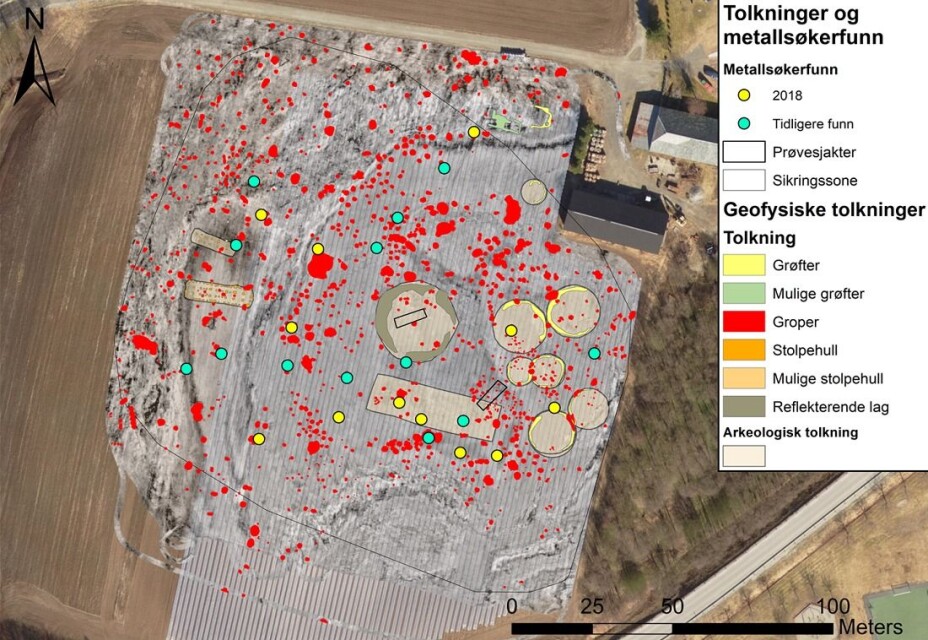
Extraordinary!
It was the night of August 7th 2018 when Caroline Fredriksen and Arne Anderson Stamnes, both archaeologists at the NTNU University Museum, realized that there was something very special about Løykja, in Sunndal municipality in Norway.
Metal-detector users had been submitting objects from the farmland here for several years. This led the county municipal archaeologists to take a closer look at the area. They found both cooking pits and an intact tomb, but hadn’t come up with a clear picture of what went on at Løykja – and to what extent. That’s what Caroline and Arne were trying to figure out this particular night.
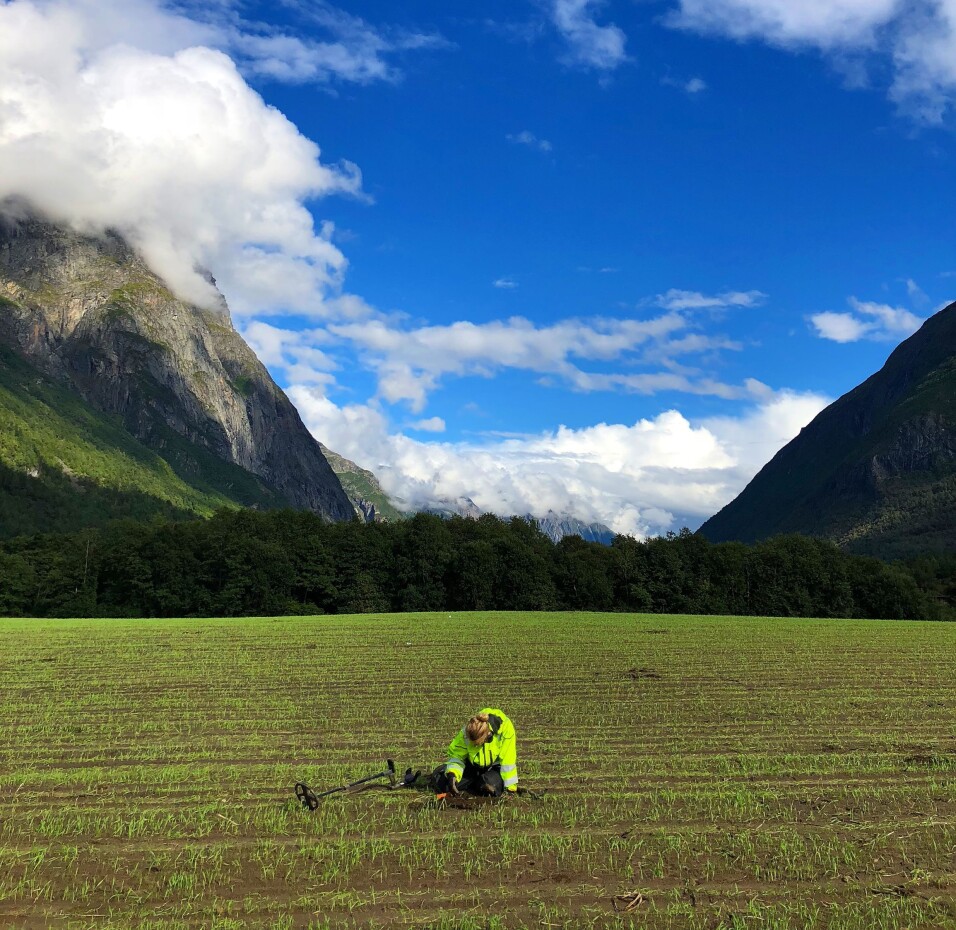
«Rain was forecast for the next day, so we had to run the georadar until 2 a.m. to cover everything before the soil turned to mud,» says Fredriksen.
Ground-penetrating radar (GPR), also called georadar, sends electromagnetic signals into the ground, and some of these signals are reflected back when they detect structures below the surface. This is how archaeologists get a kind of x-ray map of what lies two to three metres below the ground.
The degree of image detail depends on the soil. At Løykja, the ground conditions are particularly well suited for such geophysical investigations. Even as the two archaeologists were driving back and forth across the site at 8 km per hour, they could clearly see the remains of long houses and burial tombs appearing on the screen. Not to mention cooking pits – hundreds of them.
«We immediately realized that this was something out of the ordinary. In the end, we counted a total of 1154 pits. It’s pretty extraordinary!» said Fredriksen.
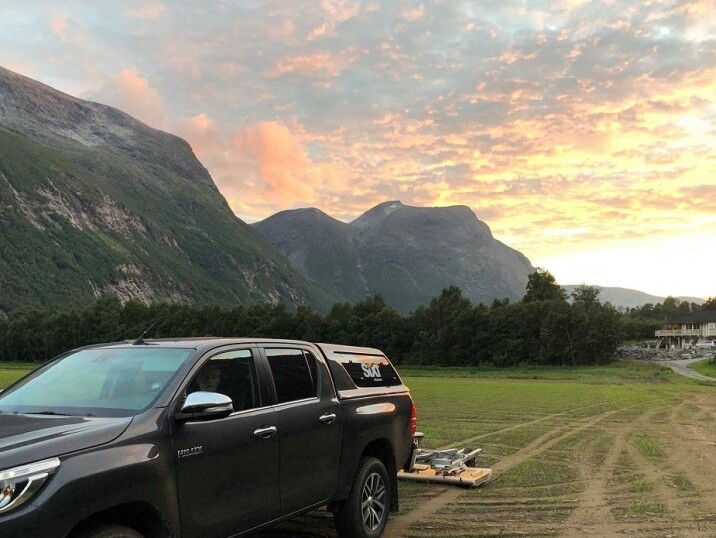
Ritual gathering place?
The high number of cooking pits tells us that once upon a time a lot of people gathered at Løykja.
They probably came here for special occasions, because pit cooking on this scale wasn’t anything people would do after a regular day.
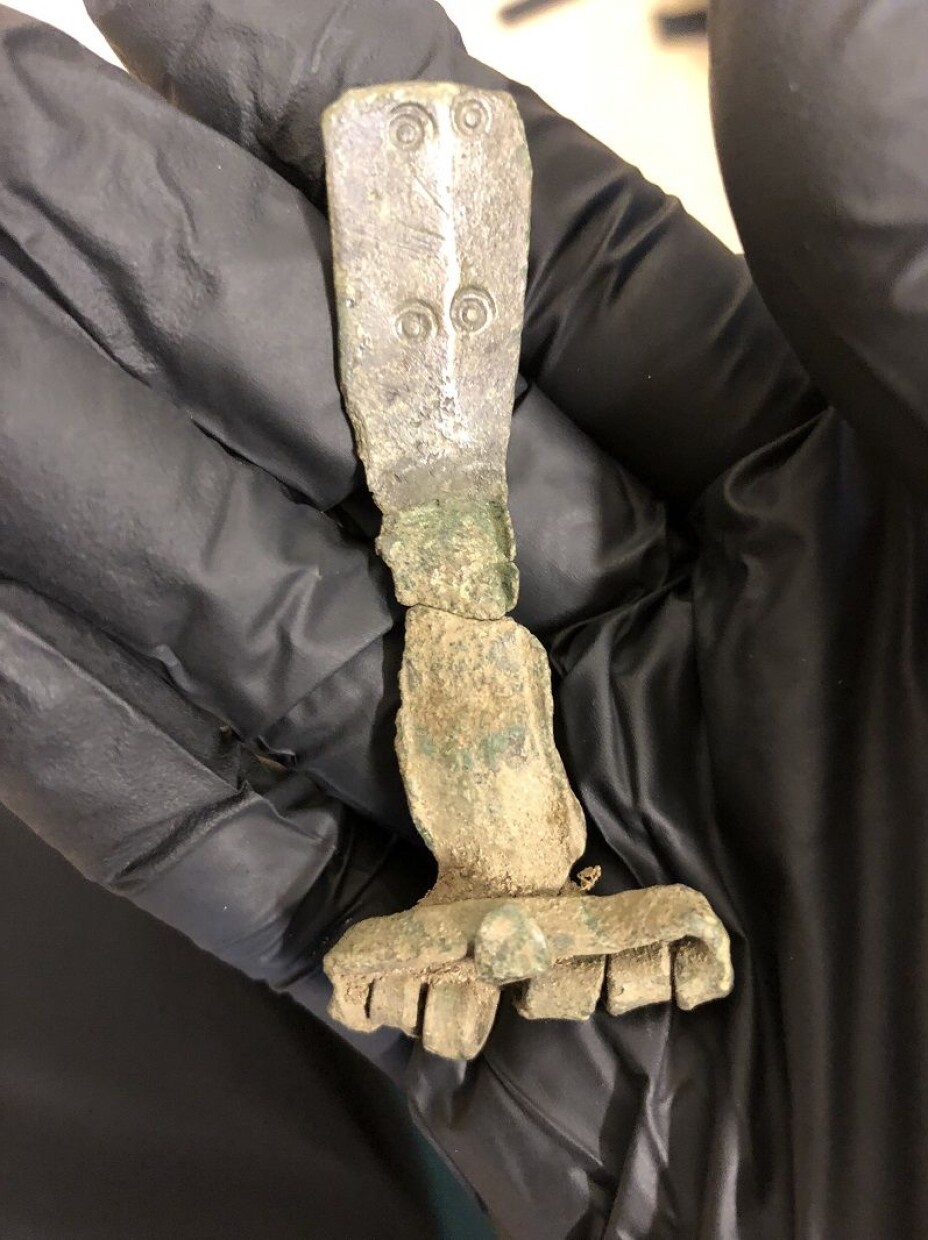
The metal-detector findings indicate that the greatest amount of activity in the area took place from Roman to Merovingian times, from approximately year 0 to 750 CE. It is very common to find cooking pits in settlements from this period, but the archaeologists have so far only found the remains of two houses on the site. Then the question becomes: What did people do here – besides cook food?
«It’s difficult to say for sure what went on here, but places with such a high concentration of cooking pits – and relatively few settlement traces – are often interpreted to be some form of ritual gathering place,» says Fredriksen.
«The name Løykja – from the Old Norse Leikr – also indicates that the site was an important social gathering place, perhaps in combination with trade or ritual activities. This seems likely, especially when viewed in the context of a large burial ground 200 metres southeast of the cooking pit area,» Fredriksen says.
She adds that the 2018 investigations did not manage to delineate the whole cooking pit area, so it is probably much larger.
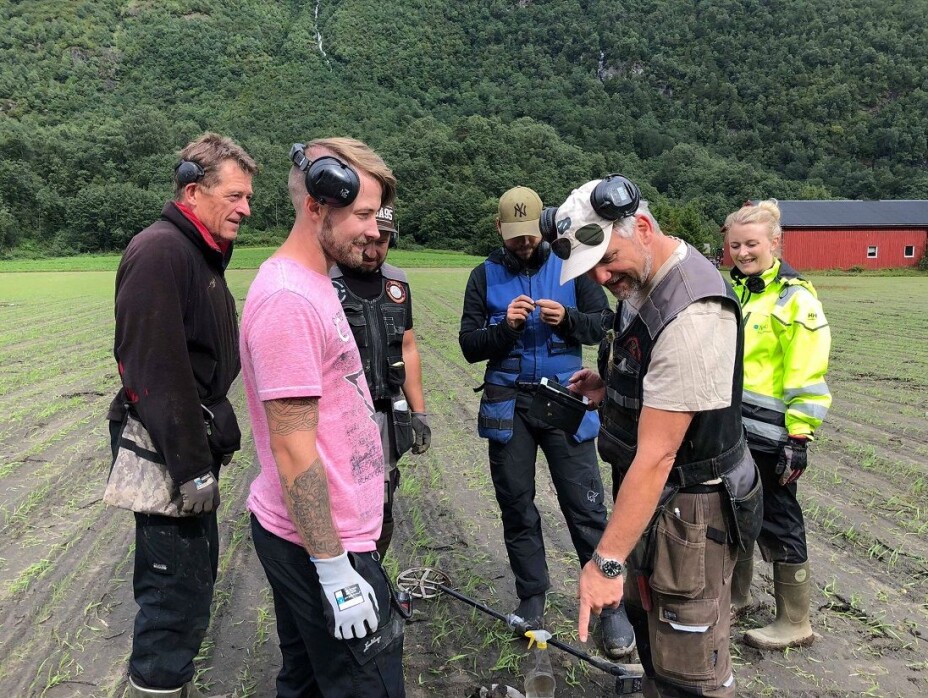
Cooperating with metal-detector users
Private individuals carried out the search of the cooking pit site at Løykja through metal detecting. Experienced metal-detector users from all over the country cooperated with the archaeologists on a systematic search of the entire area following the georadar surveys.
«We have excellent cooperation with the metal-detecting community. They have a lot more expertise than we archaeologists do in how to use metal detectors. For example, they’re able to tell what kind of metal they’ve found just from the sound the metal detector makes. I’ve learned everything I know about metal detecting from these people,» says Fredriksen.
Everything from tweezers and spinning wheels to weights and hacksilver (currency) was found on the cooking pit site. The bulk of the artefacts stemmed from Roman times up to and including the Merovingian period.
«Among other things, we’ve found buckles from several different periods, which is a typical burial material, as well as hacksilver and production waste,» says Fredriksen.
The objects do not give us the full answer to what exactly brought so many people to Løykja, but they do tell us that it was an area packed with human activity over a long period.
You can read an English summary (p. 5) of Fredriksen’s and Stamnes’ archaeological report: ‘Geofysiske undersøkelser og sosialt metallsøk på Løykja, Sunndal kommune, Møre og Romsdal’ (Geophysical investigations and social metal searches at Løykja, Sunndal municipality, Møre og Romsdal county).
———
Read the Norwegian version of this article at forskning.no


































